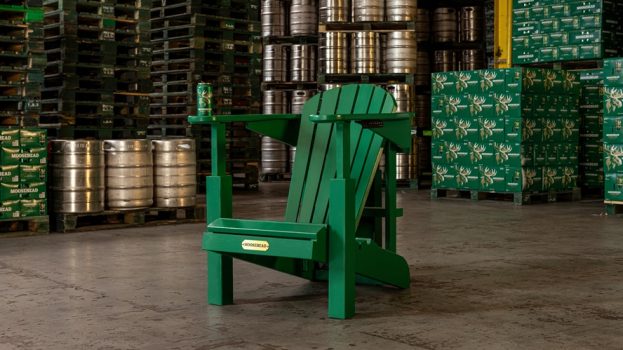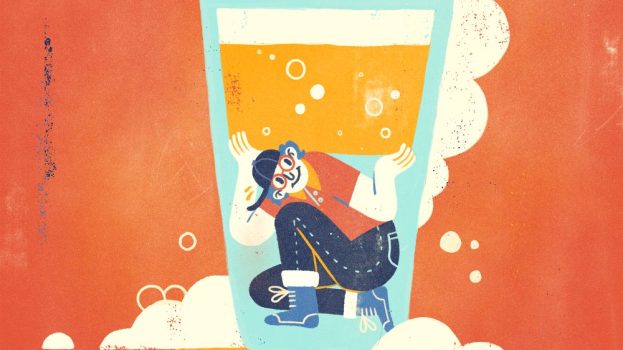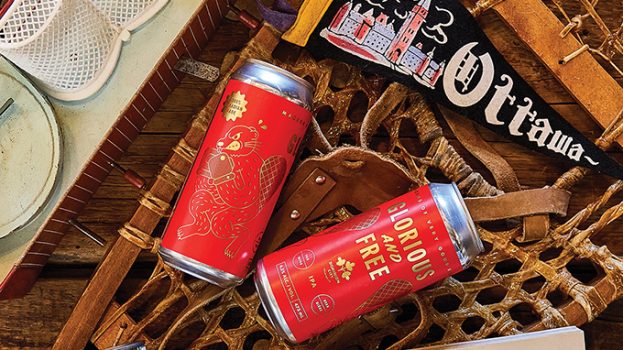Move over brand manager, the brand facilitator has arrived.
Or at least that’s what should be happening in your marketing departments, according to Alex Wipperfürth, author of Brand Hijack: marketing without marketing, and co-founder of San Francisco-based agency Plan B. He believes today’s most successful marketers are able to foster an ongoing dialogue between engaged consumers and the brand.
From Wipperfürth’s perspective, companies are starting to wrap their heads around this notion. He’s seen much more interest in ‘co-created brand hijack,’ a term he defines as ‘the act of inviting subcultures to co-create a brand’s ideology, use and persona, and pave the road for adoption by the mainstream.’
The reason of course, is that thanks to media proliferation, not to mention commoditization, the consumer is in control. And ‘technology has made everything more democratic, people have more of a voice, and they’ve also brought transparency to the whole thing,’ says Wipperfürth. In other words, marketers almost have no choice but to embrace co-created hijack.
It’s not necessarily a bad thing, though, because it has many benefits versus conventional approaches. As Wipperfürth outlines, instead of trying to convince consumers that a certain brand will make them cool or successful (or whatever aspirational message one might send), hijacked brands offer ‘meaning within a broad cultural context…[and therefore] a more inspirational role in people’s lives.’
Jeff Roach, managing director, youth marketing, at Toronto-based consultancy Youthography, views
co-creation of brand messaging as a necessity when dealing with a young consumer. ‘Blogs and pods – they are having an impact. Corporations, despite their best efforts, aren’t able to control them,’ he says, noting ‘from our point of view, it’s almost like the brand has to [achieve] consumer-based development – or else it doesn’t develop.’
In his book, Wipperfürth cites several examples of brands that nailed this strategy – from Red Bull to Blair Witch to Absolut. Red Bull, for one, got it right from the moment it was introduced in 1987. First it became a source of non-alcoholic fuel for the rave crowd (the company encouraged consumption by tossing empty Red Bull cans onto clubs’ bathroom floors); second, it didn’t respond to rumours about it being a drug-in-a-can (see sidebar); and third, it engaged in an effective seeding campaign. When it launched in New York, for instance, the company made the product available to staff of hip bars – and had it delivered by taxi to them. Therefore they made pals out of two important subcultures that influence the bar crowd.
The Jamaican lager Red Stripe is somewhat mimicking this success in various international markets and is now taking a stab at doing the same in Canada. According to Bob Huitema, category/brand director for Toronto-based Diageo Canada, which distributes the brew, Red Stripe has achieved impressive results for its ‘social diffusion’ strategy, which entails focusing on specific groups, like the surfer crowd in Australia and the music industry in the States, where the brand is now the fourth-fastest-growing import lager.
Here in Canada, the company has hooked up with Toronto-based word-of-mouth expert Matchstick, to find influencers in Canada’s largest city. Matchstick is using a proprietary tool to crunch data after having surveyed potential candidates at Toronto’s Beer Festival the weekend of Aug. 6. ‘Influencers’ will be sent ‘Red Stripe kits,’ including product and marketing collateral.
‘We give them a means to help us promote Red Stripe to their friends…the kits allow them to invite people to a party, and Red Stripe would be a story they tell at it,’ explains Huitema, who adds these consumers are not paid. ‘Matchstick screens them to find out that they want to do it.’
Diageo is banking that these guys – the target is mainly male, legal drinking age to 35 – will talk up Red Stripe’s Jamaican heritage, as well as its premium and authentic attributes. In the future, Red Stripe may zero in on the entertainment crowd as its subculture, adds Huitema.
Absolut, meanwhile, has been effective at targeting the arts community ever since Andy Warhol collaborated with the brand for his interpretation of the Absolut bottle in 1985.
Last month, Absolut Canada continued the relationship by hooking up with DNA 11, a new Ottawa-based company that creates portraits by photographing human and non-human DNA and then enhancing the images with colour and filter effects.
Using DNA for fruits like raspberry, mandarin and others that are also Absolut flavours, DNA 11 created a four- by 15-foot light box illuminating a pop-art-inspired scene. The work was unveiled at Ottawa hip venue Helsinki Bar & Lounge on July 22.
David Bitran, national marketing manager at Maxxium Canada in Toronto, says it’s part of a larger program in which the number-one imported vodka brand brings art to various hot spots across Canada.
‘We ask artists to create a piece inspired by Absolut…[and] we give them full freedom to do their own interpretation of the brand,’ he says. ‘The creativity of the artist offers freshness to the brand.’
There are also an increasing number of companies that may not be engaged in brand hijack per se, but are at least encouraging consumers to converse with their brands. Wipperfürth lauds Miami hot shop Crispin Porter + Bogusky’s ‘phenomenal’ ability to give Burger King a place in pop culture.
The QSR’s strategy, according to chief global marketing officer Russ Klein, is ‘social currency.’ The marketer spoke at the ad festival in Cannes in June, where he described how the ‘Have it your way’ campaign, including both its guerrilla tactics and quirky TV spots, has got people talking – and in many cases pulling pranks.
Burger King has been a favourite target for barbs on The Tonight Show (at one point Jay Leno mentioned the brand 17 times in 65 days), and the chain’s winter Sponge Bob promotion resulted in six-foot blowups of the character being ‘kidnapped’ from BK locations.
‘We view it as putting the customer in charge in a way that is socially connected – and Burger King can play an active role in that,’ Klein told the Cannes audience, admitting that this requires some hand-holding internally.
‘You have to manage expectations up and down the line to get people comfortable with the approach. You have to ask yourself: ‘Do you want to react to outcomes or create conversations?” In answering affirmatively to the latter, Burger King has enjoyed 16 months of same-store sales increases.
Toronto-based Coca-Cola Canada is also trying to facilitate dialogue, without giving away too much control. It hired two sisters, Danielle and Anita from Port Dalhousie, Ont., to drive cross-country this summer, talking to youth about subjects like music, fashion and sports – and videotaping their conversations. The footage is uploaded to icoke.ca, where consumers can check out what their Canadian peers had to say, plus get the chance to win a Sony Vega 50-inch projection LCD TV every day, as well as other prizes. (The contest was promoted by traditional media.)
‘We need to evolve to communicate with consumers in a [fashion] that is not just one-way,’ explains Aaron Macanuel, group brand manager for Coke trademark Canada. ‘We need to allow consumers to interact, versus just seeing [the message] on their TV screen.’
Macanuel stresses that Danielle and Anita are not performing a hard sell for Coke. ‘Their job is not to go up to consumers and ask them to drink Coke, but just to interact and get their opinions.’ (A separate iCoke team has been travelling across the county to sample new incarnations of the soft drink and hand out icoke.ca loyalty cards.)
Like BK, Coke received some media buzz because of this program. Danielle and Anita have appeared on BreakfastTelevision in Vancouver, and were featured in the Toronto Sun, as well as other media. And since the site launched on May 19, there have been more than 1.7 million hits, with over one million unique visitors. As well, says Macanuel, users are spending a lot of time on the site, much longer than industry averages. He points out the company may consider making the site even more interactive, by adding chats in the future.
Despite all the hype, Wipperfürth suggests not all marketers are going about brand hijack properly. ‘They’re still looking at it from a brandcentric angle,’ he argues. ‘There are lots of attempts where marketers say: ‘We need to collaborate with consumers, so let them create our advertising for us.’ [But] consumers aren’t suckers, they aren’t doing it to provide free marketing for brands. They do it because they love the vision and they want to engage. They have to do it on their own terms.’
The Serendipitous Hijack
All is said and good when the marketer allows consumers to play with the brand, but what happens when there’s a ‘serendipitous hijack?’, as Brand Hijack author Alex Wipperfürth calls it.
Many corporations react negatively, even with threats of legal action, in an effort to protect their trademark. Bad idea, say pundits.
Andrew Potter is the co-author of The Rebel Sell – which explores the birth of the rebel consumer. He calls such a reaction short sighted: ‘Everybody who tries to hijack your brand is a customer. Treating them as enemies is ludicrous.’ For his part, Wipperfürth points to Mattel as a text book example of what not to do.
A decade ago, Paul Davis, one of the largest certified dealers of collector’s edition Barbies, gave the ‘Ugliest Barbie’ prize to the Elizabethan Queen Barbie in his catalogue. Mattel sued. The result? Bad press and the emergence of anti-Mattel Web sites.
Wipperfürth’s take? ‘Just have a fucking sense of humour about these things. In marketing, we’re a bunch of control freaks – that’s our traditional job description. The picture of 12 suits sitting in a boardroom, deciding how we’re going to think about a brand is so outdated by now.’
That’s not to say a brand won’t ever need to be reclaimed by a marketer. But Wipperfürth points out there’s often a better, more subtle way of handling things. For instance, when Burberry’s signature plaid was being ripped off right, left and centre a few years ago, the company didn’t publicly criticize. Instead it quietly dropped the plaid and switched to another pattern.
With consumers in the driver’s seat now, serendipitous hijacks will happen more often. And marketers should be prepared, because consumers view brand labels almost as their own property. As Potter says, there is a definite overlap between brand hijack and the free culture movement: ‘The distinction between brands and cultural entities in general is dissolving, if it was ever that viable. [And consumers believe] they have the right to manipulate culture as much as they want.’
Brand Hijack Manifesto
Want your brand to get hijacked? It’s not as easy as it sounds. Enter the following guidelines from Plan B, the San Francisco-based agency co-founded by Brand Hijack author Alex Wipperfürth. If you’re brave enough to stick it out, it might just happen.
* Let go of the fallacy that your brand belongs to you; it belongs to the market.
* Co-create your brand by collaborating with your consumers.
* Scrap the focus groups, fire the cool chasers and hire your audience.
* Facilitate your most influential and passionate consumers in translating your brand’s message to a broader audience.
* Be patient. It could take years to take off – or weeks.
* Be flexible. Carefully plan every step, but be totally open to having the story rewritten along the way.
* Lose control. Free yourself to seize sudden opportunities that only last for moments.
* Resist the paranoid urge for consistency. Embrace the value of being surprising and imperfect.
* Respect your community.
* Let the market hijack your brand.























